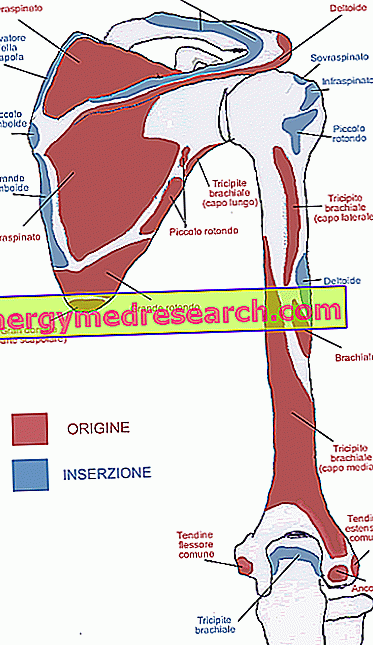Related articles: Syringomyelia
Definition
Sirigomyelia is a neurological disorder characterized by the formation of cysts or cavities in the central part of the spinal cord. These intramedullary lesions generally contain a clear fluid, similar to the cerebrospinal fluid.
Syringomyelic cysts have very variable shapes and sizes, but, in the long run, their presence creates damage to the spinal cord, as it stretches the nervous tissues.
The disease can derive from a known cause (secondary syringomyelia) and, in most cases, is associated with a congenital anomaly of the cranio-cervical junction, known as the Chiari malformation (which consists in the herniation of the cerebellar tissue in the spinal canal ), or encephalon (eg encephalocele and spina bifida). It would therefore be an abnormality of marrow development and, on this congenital basis, it is possible that acquired factors may occur, such as spinal trauma, infections, circulatory disorders, medullary tumors and other lesions that partially block the liquor flow. More rarely, there is no known predisposing cause (primary syringomyelia).
Syringomyelia commonly originates in the cervical area, but can extend downwards, along almost the entire spinal cord. Syringobulbia, on the other hand, is a rarer condition, which usually occurs as a fissure (a crack) located in the lower portion of the brainstem, capable of interrupting or compressing the lower cranial nerves or descending ascending or motor sensory pathways.
The severity of the disease depends on the location in the spinal cord and how far the syringomyelic cavity is. Each patient therefore experiences a different combination of symptoms and an extremely varied clinical picture. The progression of the disease is generally slow.
Most common symptoms and signs *
- Asthenia
- Muscular atrophy and paralysis
- Muscular atrophy
- Dysarthria
- Dysphagia
- Bladder dysfunction
- Neck pain
- Hand and wrist pain
- Arm pain
- Facial pain
- Muscular collation
- Sore legs
- Fecal incontinence
- Hypertonia
- Hypoaesthesia
- weakness
- Muscular hypotrophy
- Backache
- Nystagmus
- Paralysis of the vocal cords
- Paraplegia
- Paresthesia
- Hoarseness
- Joint stiffness
- Scoliosis
- Hiccup
- Muscle spasms
- Night sweats
- Spastic tetraparesis
- Dizziness
- Double vision
Further indications
Syringomyelia usually occurs in young adults. Typically, the disease causes weakness, atrophy and flaccid paralysis in the hands and arms, often with fasciculations, paresthesia and loss of reflexes. Furthermore, there are disturbances in swallowing and a deficit in thermo-pain relief sensitivity (the first anomaly to be detected may consist of a burn or a cut that does not cause pain).
Later, chronic pain develops (especially in the neck, arms, hands and back) and spastic hypostenia affecting the lower limbs, sometimes with a sense of stiffness and weakness, and peripheral motor or sensory dysfunctions due to bone marrow compression. Deficits can be asymmetric.
Syringomyelia can also lead to an altered regulation of body temperature, sweating and intestinal motility.
The symptoms of syringobulbia include, instead, nystagmus, thermo-pain hypoesthesia of the unilateral or bilateral face, atrophy and weakness of the tongue, dysarthria, paralysis of the palate and vocal cords and hoarseness. Sometimes, diplopia, vertigo, persistent hiccups and trigeminal neuralgia occur.
The diagnosis is made by magnetic resonance imaging of the spinal cord and brain with gadolinium. The therapy includes the correction of the predisposing causes of syringomyelia (eg abnormalities of the cranio-cervical junction, post-operative scarring and vertebral tumors) and surgical decompression or other procedures to drain the syringomyelic cavity and restore the liquor flow. Unfortunately, treatment is usually not able to resolve serious neurological dysfunctions.



